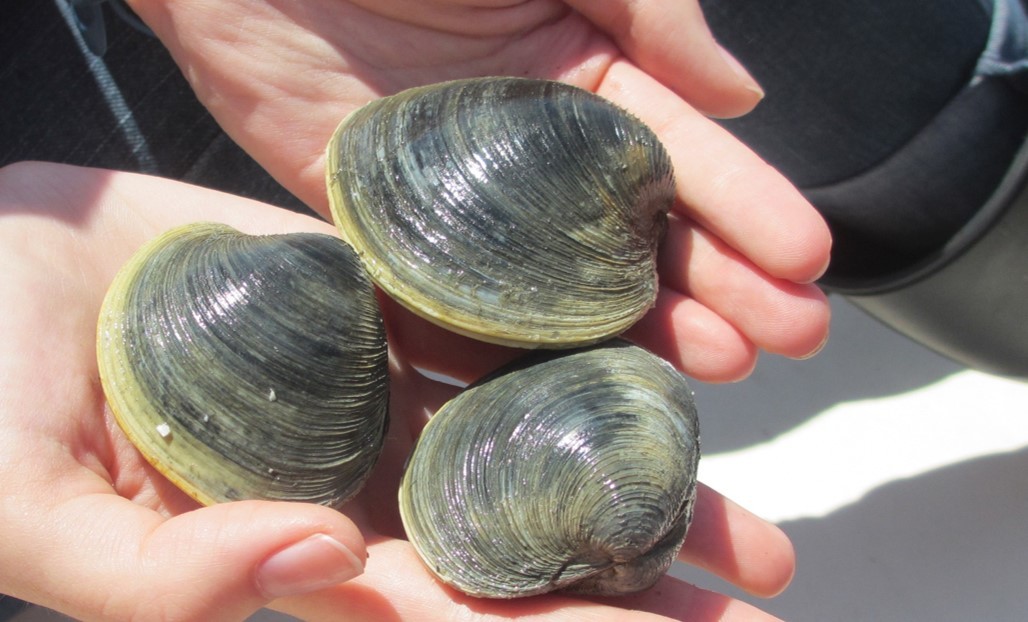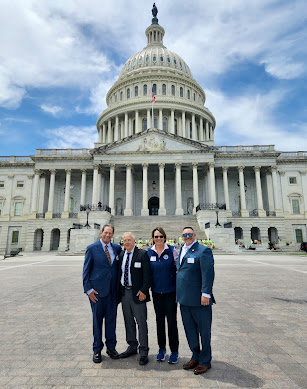Learn how to quahog this summer at one of three ‘Come
Clam with Me’ programs.
Come Clam with Me
The Rhode Island Department of Environmental Management’s
Aquatic Resource Education program will hold three more 'Come Clam with Me'
events this year. The events are
scheduled for August 12, 2:00 p.m. to 5:00 p.m. at Rocky Point, Warwick; August
25, 2:00 p.m. to 5:00 p.m. at Gull Cove, Portsmouth; and September 9, 3:00 p.m.
to 6:00 p.m. at North Kingstown Town Beach.
Participants learn how to dig for clams, the equipment you
need, and the management strategies that support quahogging in Rhode Island.
The program fee is $10/person for registrants 8 years of age
and older. For information and registration call 401-330-0634, email kimberly.sullivan@dem.ri.gov or visit online at Aquatic Resource Education (A.R.E)
Program for Children and Adults | Rhode Island Department of Environmental
Management.
Some quahog history
The word quahog comes for the Narragansett Indian name
“poquauhock”. Indians used quahog shells
to make beads that were used as money (called wampum). A quahog can get quite old, each line on its
shell is a growth ring. You can count
the rings to determine the quahog’s age.
Researchers estimate that the largest quahogs (about four inches in
length) can be 40 years old.
Where to get them
You can dig for quahogs in many coastal Rhode Island
towns. Parts of the Bay have seasonal,
conditional or permanent closures, check the RI Department of Environmental
Management Web site for areas you can shellfish, visit Shellfishing | Rhode Island
Department of Environmental Management. I like to fish spots I know are clean in Warwick, North
Kingstown and on salt ponds in Narragansett.
How to dig them
For years, I dug for quahogs with my feet, this is the way
may father taught me. Sort of like doing
the twist with your feet underwater and moving backwards until you feel a
quahog. Once you do, you reach down and
pull it up with your hand. Today I use a
quahog or clam rake which is available at bait and tackle shops and hardware
stores. In early spring the water is
about fifty to sixty degrees so I use waders and rubber gloves with great
success (I use this same gear to scallop in the fall and winter). They protect my feet and enable me to quickly
catch what I need for dinner, minimizing the time I am in the cold water.
How to clean and
prepare the catch
You can clean quahogs in the salt water by tossing them
underwater in a mesh nylon bag. When I
get home I spray them with water to get the remaining mud off and discard any
with opened or cracked shells. I then
soak them for an hour or so, drain and refrigerate them before opening so their
muscles are cold, relaxed and they are easier to open.
Quick quahog dishes
I had the chance to dig some quahogs this last week. Here are
two recipes I like to make for my family.
It’s my version of linguini with clam sauce and clams cassino which I
traditionally take to my sisters-in-law’s house on Thanksgiving Day but earlier
this month had them to celebrate the 4th of July. Here is the clams casino recipe, for the
Frutti de Marie Quahog Pasta complete recipe visit this article on my posting
blog at www.noflukefishing.blogspot.com .
Frutti de Mare
Quahog Pasta
Ingredients:
½ cup virgin olive oil
4 cloves garlic thinly sliced (or 4 teaspoons chopped garlic
from jar)
1/3 cup chopped fresh flat-leaf Italian parsley (plus four to
five good pinches)
½ cup dry white wine
½ lemon juice
red pepper
3 dozen (scrubbed) littleneck quahogs (1 ½ to 2 inches)
meat of 6 to 8 quahogs
cut-up and cleaned (optional)
1 pound linguini pasta
Scrub
littleneck quahog shells thoroughly and put them aside.
Cook linguine while making recipe.
Heat extra virgin olive oil in heavy pasta pan over medium
heat, cook garlic in oil until golden brown (about one minute). Add and stir in 1/3 cup chopped parsley and
all the little necks, let simmer for two minutes. Add wine and let simmer for one minute. Add lemon and the meat of six to eight large
quahogs cut up and cleaned (extra quahog meat is optional; if I catch them, I
put them in). Add red pepper to
taste. Cook for eight to ten minutes or
until all quahogs are open. Discard quahogs that are not open. Lower heat and put in one pound of cooked
linguini and toss the entire mixture.
Remove from heat and put into large pasta bowl. The finishing touch… garnish with four pinches of fresh
parsley.
Captain Dave’s clams casino
Clean littlenecks or smallish quahogs, cut meat from shell
and leave it in the shell, top with mixture of fresh chopped parsley, flavored
breadcrumbs, and Ritz cracker crumbs. Lay a one to one and half inch piece of
bacon on top. Bake at 350 degrees for twelve minutes, then broil on lower shelf
for one to two minutes to brown bacon (make sure they don’t burn under
broiler). Plate and serve with fresh
lemon wedges and hot sauce.
Where’s the bite?
Striped
bass, bluefish and false albacore. Jeff
Ingber of Ocean State Tackle, Providence, said, “The false albacore bite off
Narragansett has been red hot from just about any rock. The fish are about two to four pounds. And the striped bass bite has been very good
too along the southern coastal shore.” “The striped bass bite at Sugar Reef has
been good with a lot of squid in the area but the striped bass bite at Block
Island has been hit or miss,” said Ryan Turner of Warch Hill Outfitters,
Westerly. Jeff Sullivan
of Lucky Bait & Tackle, Warren, said, “The striped bass bite was
outstanding in front of Newport in the Brenton Reef area Wednesday. We caught 30 plus pound fish both with
surface lure and with live eels.” “The bigger
bass have made their way into the salt ponds and are also abundant on local
reefs. Live bait has been the key to hooking the larger fish, while smaller
bass can be caught using sand eel imitations and topwater lures. We've seen
fewer bluefish locally this week. A few are still being caught from the rocks,
but more can be found out around Block Island now.” said Declan O’Donnell of
Breachway Bait & Tackle, Charlestown.
Summer flounder (fluke). Ryan
Turner of Watch Hill Outfitters, said, “The black sea bass bite at Block Island
has been good, however, along the coastal shore in South County anglers are
catching few keepers and a lot of short fluke.”
Declan O’Donnell of Breachway Bait & Tackle, said, “The bite remains consistent, with
mostly smaller fish being caught. They've moved into deeper local waters,
around 43-55 feet. Interestingly, a good population has also moved into the
salt ponds. These fish can be targeted effectively with a light bucktail and a
teaser, worked in channels and deep troughs between sandbars.” “The black sea bass bite is good in about 80
feet of water off the Sakonnet River with a strong fluke bite on either side of
the Jamestown Bridge depending on the tide.
The fish are a nice 20 to 21” eating size,” said Jeff Ingber of Ocean
State Tackle. “Anglers caught fluke fishing in 50 feet of water off Newport
Wednesday, however, they had to fish through a lot of shorts. Bucktails were working as well as Hi/Low rigs,”
said Jeff Sullivan of Lucky Bait & Tackle.
Bluefin tuna. “The school bluefin tuna bite has been on at
the Gully,” said Jeff Ingber of Ocean State Tackle. Declan O’Donnell of Breachway Bait &
Tackle said, “Tuna reports have been excellent this week, with most fish
in the mid-40-inch range. Trolling with green, zucchini, and purple side
trackers has been successful, and some customers are also catching fish on jigs
and plugs.”
Freshwater. “Both
the smallmouth and largemouth bass bite is on.
Anglers hooking up with smallmouth bass using small shads, with frogs
and spinner baits working well for largemouth bass,” said Jeff Sullivan of
Lucky Bait & Tackle.


















